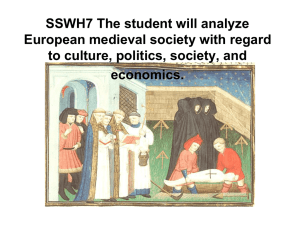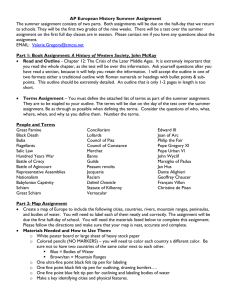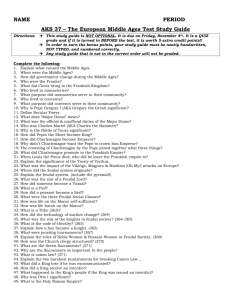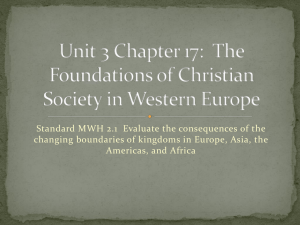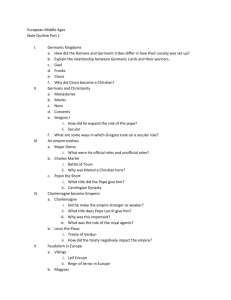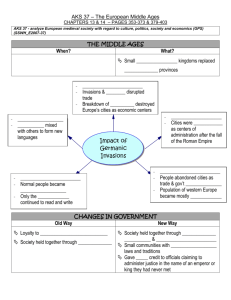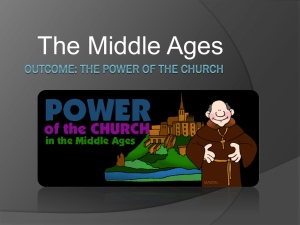Name: Date: Middle Ages Test Study Guide Key Words to define
advertisement
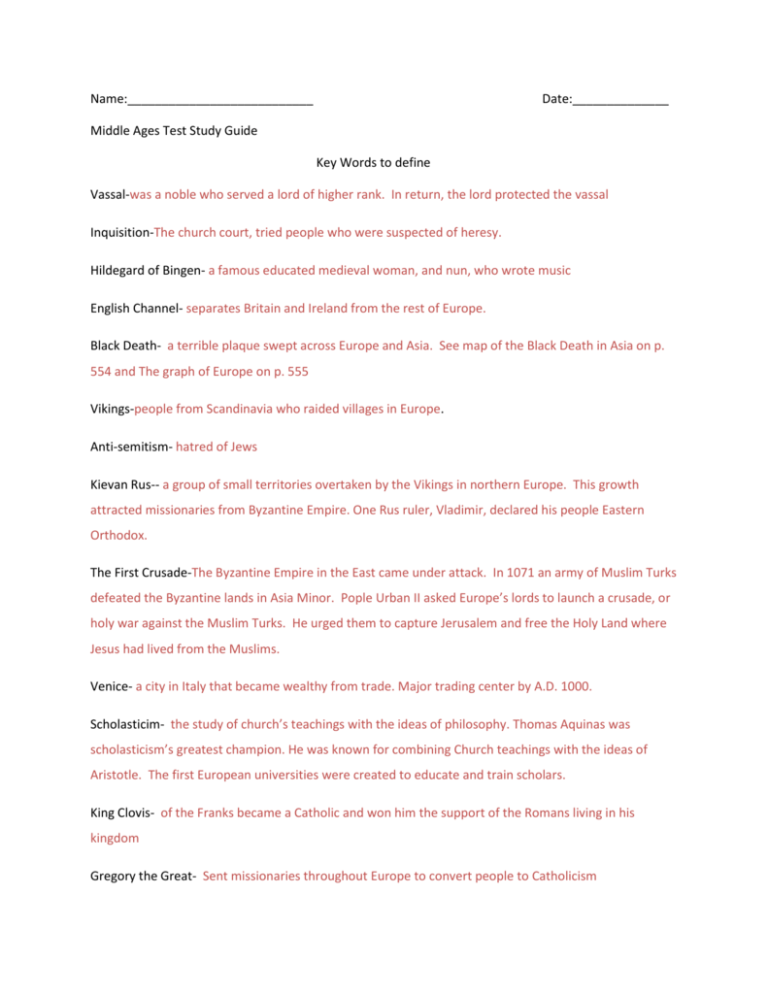
Name:___________________________ Date:______________ Middle Ages Test Study Guide Key Words to define Vassal-was a noble who served a lord of higher rank. In return, the lord protected the vassal Inquisition-The church court, tried people who were suspected of heresy. Hildegard of Bingen- a famous educated medieval woman, and nun, who wrote music English Channel- separates Britain and Ireland from the rest of Europe. Black Death- a terrible plaque swept across Europe and Asia. See map of the Black Death in Asia on p. 554 and The graph of Europe on p. 555 Vikings-people from Scandinavia who raided villages in Europe. Anti-semitism- hatred of Jews Kievan Rus-- a group of small territories overtaken by the Vikings in northern Europe. This growth attracted missionaries from Byzantine Empire. One Rus ruler, Vladimir, declared his people Eastern Orthodox. The First Crusade-The Byzantine Empire in the East came under attack. In 1071 an army of Muslim Turks defeated the Byzantine lands in Asia Minor. Pople Urban II asked Europe’s lords to launch a crusade, or holy war against the Muslim Turks. He urged them to capture Jerusalem and free the Holy Land where Jesus had lived from the Muslims. Venice- a city in Italy that became wealthy from trade. Major trading center by A.D. 1000. Scholasticim- the study of church’s teachings with the ideas of philosophy. Thomas Aquinas was scholasticism’s greatest champion. He was known for combining Church teachings with the ideas of Aristotle. The first European universities were created to educate and train scholars. King Clovis- of the Franks became a Catholic and won him the support of the Romans living in his kingdom Gregory the Great- Sent missionaries throughout Europe to convert people to Catholicism Theology- the study of religion and God Code of chivalry- a guide for knights’ good behavior Francis of assisi- founder of the first order of friars who helped the poor and served as missionaries. Alps- separates Italy from the rest of Europe Concordat- an agreement between the pope and the ruler of a country. The Concordat of Worms limited the emperor’s power. Please answer the following questions: 1. Describe who Gregory The Great was and why is he important? Be sure to mention excommunication. Gregory I was a pope who wanted all of Europe to become Christian ans he asked monks to become missionaries. 2. Describe Charlemagne. What did he believe in as important? Was he religious? What was his view on the Pope crowning him Emperor? Charlemagne was a temperate man. He believed in education. He did not think it was appropriate for the Pope to crown him emperor he did want his people to think the Pope had power over leadership. He was crowned the new emperor by the pope. 3. How did rivers and mountains shaped European culture? Natural barriers separated cultures from one another. 4. What allowed trade to resume around 1100? Surplus(extra supply) of goods and safer travel 5. What were early churches called? How can you describe them? What did they look like? What new type of art/architecture was the focus of these churches? Cathedrals, stained glass windows 6. Describe the Black Death. How did it affect Europe? Population decreased tremendously (about one in ten people), wages rose and trade declined, also known as the plaque 7. Draw a social class pyramid of feudalism See p. 523 in J.A.T. to draw yours 8. Where did the Franks settle? France 9. What were Serfs? What were they not allowed to do? What was their life like? Serfs were peasants who lived on the manor. They farmed for the entire manor. They had few rights. If they fled the manor for a year, they were free to live elsewhere; they were not allowed to marry.

